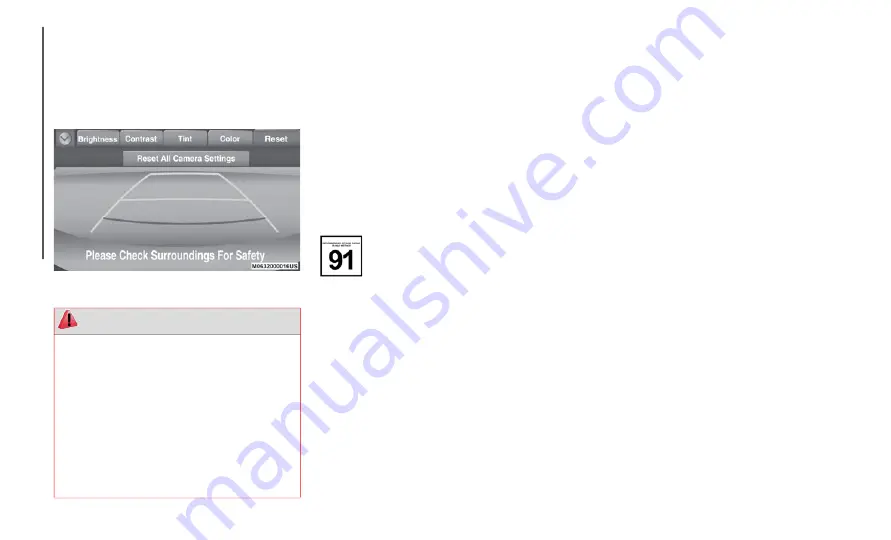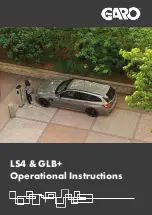
STARTING AND OPERATING
184
3. Use the cursor to adjust the brightness,
contrast, tint and color. If a reset is
needed, press the reset button.
4. Select the icon on the top left of the
screen to close the tabs.
Image Quality Adjustments
REFUELING THE VEHICLE
Refueling The Vehicle
Stop the engine before refueling.
Fuel Requirements
Vehicles with catalytic converters or oxygen
sensors must use ONLY UNLEADED FUEL,
which will reduce exhaust emissions and
keep spark plug fouling to a minimum.
Fuel: Premium unleaded fuel.
Octane Rating (Anti-knock index):
91 (R + M)/2
method or above (96
RON or above) (U.S. federal law
requires that octane ratings be
posted on gasoline station pumps).
Regular unleaded fuel with an octane rating
from 87 to 90 (91 to 95 RON) can be used,
but this will reduce performance slightly,
such as reduced engine output, and engine
knocking.
Fuel with a rating lower than 87 octane (91
RON) will negatively affect the emission
control system performance and could also
cause engine knocking and serious engine
damage.
While operating on gasoline with an octane
number of 87, hearing a light knocking
sound from the engine is not a cause for
concern. However, if the engine is heard
making a heavy knocking sound, see your
authorized dealer immediately. Use of gaso
-
line with an octane number lower than 87
can cause engine failure and may void or not
be covered by the New Vehicle Limited
Warranty. Poor quality gasoline can cause
problems such as hard starting, stalling, and
hesitations. If you experience these symp
-
toms, try another brand of gasoline before
considering service for the vehicle.
Gasoline blended with oxygenates such as
alcohol or ether compounds are generally
referred to as oxygenated fuels.
The common gasoline blend that can be
used with your vehicle is ethanol blended at
no more than 15%. Gasoline containing
alcohol, such as ethanol or methanol, may be
marketed under the name "Gasohol".
WARNING!
Adjusting the rear-view camera image
quality must always be done when the
vehicle is stationary. Do not adjust the
rear-view camera image quality while
vehicle driving. Adjusting the image
quality (brightness, contrast, color and
tint) of the rear-view camera while driving
the vehicle is dangerous since it could
distract the driver and cause a serious
accident.
















































